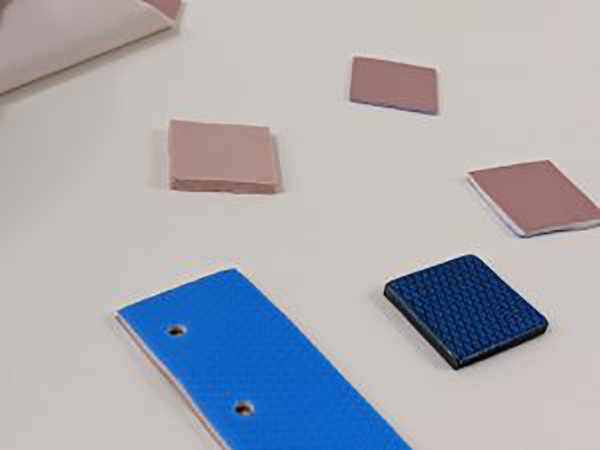products

Thermal Gap Filler Pads
Gap Pad® is a gap filler used between electronics and heat sinks as a thermal interface. The benefit of Gap Pad is that it conforms to the different surfaces and textures that may be present in electronic applications. Gap Pad may be used to fill air gaps, inconsistent surface topography, and other odd surfaces. The benefits it provides are:
- Low-stress vibration dampening
These gap filling pads can dampen vibrations due to the softness and durability of the pads.
- Elimination of air gaps to reduce thermal resistance
Elimination of air-gaps is a function of conformability, pressure, and softness. Gap Pad® is adept at providing a solution that can help to eliminate air-gaps, reducing heat in the end application.
- High conformability to reduce interfacial resistance
Different topologies in the application can create interfacial resistance causing air-gaps. Having good conformability, and low modulus can allow the Gap Filling Pad conform to the surface easier.
There are a significant amount of Gap Pad® offerings for different applications. This allows for a good mix of performance, price point, and assembly use.
- Gap Pad® VO Ultra Soft (VOUS), GPVOUS aka GAP PAD TGP 1000VOUS, Sil Pad 900S Reinforced, 1 W/m-K
- Gap Pad® VO Soft (VOS), GPVOS aka GAP PAD TGP 800VOS, Sil-Pad 900S Reinforced, 0.8 W/m-K
- Gap Pad® 1500S30, GP1500S30 aka GAP PAD TGP 1300, fiberglass reinforced, 1.5 W/m-K
- Gap Pad® 1500, GP1500 aka GAP PAD TGP 1500, no reinforcement, 1.5 W/m-K
- Gap Pad® 2000S40, GP2000S40 aka GAP PAD TGP 2000, fiberglass reinforced, 2 W/m-K
- Gap Pad® 5000S35, GP5000S35 aka GAP PAD TGP 5000, fiberglass reinforced 5 W/m-K
- Gap Pad® 2200SF, GP2200SF aka GAP PAD TGP 2200SF, fiberglass reinforced, 2.0 W/m-K
- Gap Pad® HC5.0, GPHC5.0 aka GAP PAD TGP HC5000, fiberglass reinforced, 5 W/m-K
- Gap Pad® HC3.0, GPHC3.0, aka GAP PAD TGP HC3000, fiberglass reinforced, 3 W/m-K
- Gap Pad® 3000s30, GP3000S30, aka GAP PAD TGP 3000, fiberglass reinforced, 3 W/m-K
- Gap Pad® 7000ULM, GP7000ULM aka GAP PAD TGP 7000ULM – no reinforcement, 7 W/m-K
- Gap Pad® 3500ULM, GP3500ULM aka GAP PAD TGP 3500ULM – fiberglass reinforced/ option without fiberglass as well, 3 W/m-K
Usually Gap Pad® is not available with PSA. However, Gap Pad are all available with PSA(Pressure-Sensitive Adhesive). Although, inherent tack is available on most Gap Pad® products to aid in assembly. It is important to note that adhesives may further impede the thermal pathway of the material. NEDC die-cuts Gap Pad® with conventional die-cutting machines through steel-rule dies.
How much to Compress Gap Pads?
Over the years, I’ve seen quite a bit of thermal pad discussion. A lot of it centers around how thermal performance is not good with thick Gap Pads, or low W/m-K thermal conductivity Gap Pads. However, one thing I plead customers to remember is: THIN TO WIN. I say this for two reasons:
A. The more you compress a Gap Pad, the less distance is between the power producing device, and
the heat sink. However, be careful not to over compress because if you do, you will extrude the pad, and it loses its integrity, and thermal performance will ultimately suffer.
B. Compressing the Gap Pad even moderate amounts will dramatically improve thermal performance. With that said, aiming for a target of 30% to 50% compression of nominal thickness would be a good goal. For example, if the Gap Pad is .125” thick, aiming for a compressed thickness of .063” would be a good start.